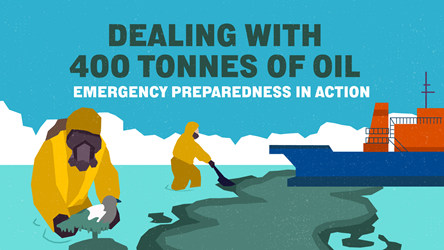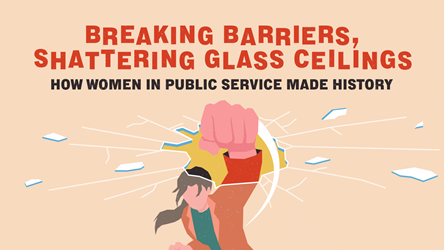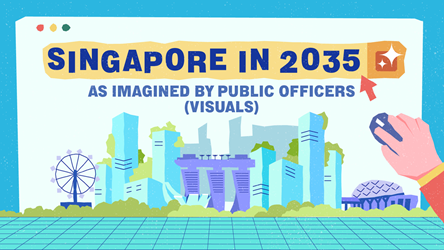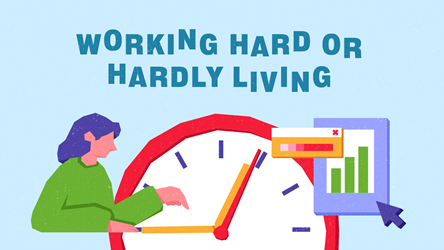How The iPad And Technology Can Help You Work Better

These days, ground officers from the Department of Public Cleanliness (DPC) perform their inspections with a new fluidity, thanks to a virtual office in their hands.
With a few taps on their iPads, they can pinpoint cleaning locations, take snapshots of service lapses, issue default notices to contractors and generate reports – all on the spot. They no longer have to make detours to the office, unlike two years ago when they were using Palm devices.
Now with mobile applications designed in-house, the officers can do the same tasks in half the time and cover a wider perimeter.
Winds of change
The idea to use technology to increase the productivity and mobility of ground officers resulted from a review carried out by DPC two years ago.
Then, the department under the National Environment Agency (NEA) had just been formed to oversee Singapore’s public cleaning regime, which was previously divided among NEA and various government agencies.
From the cleaning of roads and private estates, NEA’s responsibility was widened to include footpaths, drains, car parks, state lands and public parks.
“But we were told we couldn’t increase manpower, so we had to leverage technology to enhance our productivity,” says Mr Nasir Maideen, DPC’s Senior Manager, Performance & Management, who was moved from another department to DPC to drive innovation.
Mr Nasir is well known as an ideas man – he won the PS21 Best Ideator Award in 2011 and was NEA’s Outstanding Activist in 2013.
His bosses point out that in 2008, Mr Nasir was the one who saw that the Land Transport Authority (LTA)’s traffic monitoring system for expressways could be used to monitor highway cleanliness as well. He successfully negotiated with LTA to tap its system, saving NEA tremendous manpower and resources on checking the expressways manually.
When DPC first started, Mr Nasir’s immediate task was to assemble a team to find creative solutions to their quandary. He picked seven people with diverse skills, including operations veterans, the tech savvy, and new graduates (for fresh ideas), all of whom knew how to have fun.
“Everyone on the team must be fun-loving,” he says of his team-building philosophy, “otherwise the ideas won’t flow.”
The game plan
One of their first tasks was to trim their operations and create a wishlist of technological resources to help them. Top on that list was to give ground officers – all 61 of them – iPads for work. The tablet’s capabilities would make the officers truly mobile as they use applications to access data on government assets and record inspection results on the go.
But realising this vision turned out to be the hardest part. “Back then, only divisional directors were issued iPads,” Mr Nasir says. “Nobody had issued iPads to junior staff before.”
Unfazed, the team strove to overcome the odds. They ran the numbers, sourced for good deals and, with a cost-benefit analysis, managed to convince the senior management to approve their idea.

Nimble approach
The next step was to develop apps with NEA’s IT team. They sped up the process by creating prototypes that could be easily improved, all within six months.
These were tested with the officers and fine-tuned before their rollout. Three apps were launched in the last two years (see sidebox). Other solutions being tested and piloted to improve productivity include remote monitoring systems, modified cleaning vehicles, and smart bins with sensors.
Together, the innovations have improved workflow, boosted productivity and enabled NEA to cover more ground without increasing manpower, says Mr Nasir. By using technology, DPC now requires just 112 officers, instead of 192, to inspect public area cleanliness, audit service providers, supervise cleaners and handle feedback.
Incidentally, the use of technology has also raised the professional image of the officers and cleaners. “We made an unglamorous job look glamorous,” he jokes.
Spreading innovation
Indeed, the feedback from the ground has been positive, although some officers took some time to warm up to the new technology, Mr Nasir says. A third of the officers are above 50 years old, and were “frightened” of using the iPad.
To help them get up to speed with the technology, the team conducted a series of training classes in the office and in the field. They were also on the officers’ speed dial for a few weeks, answering their questions and troubleshooting problems.
Now the iPad has become the officers’ new best friend. “If you ask them to revert to the old system, they will tell you, no way!” Mr Nasir says.
Happily, the changes have also sparked more innovation. Some officers are exploring new apps to help them in their work. One discovered a free photo stamp app, which automatically overlays details such as the date, time and location on photos. This useful app was quickly shared and downloaded by all the officers.
Long, tough journey
Despite their early successes, Mr Nasir will be the first to say that turning ideas into real solutions takes time and involves failures.
For example, the team tried to find a less labour-intensive way to clear drain inlets along roads, in collaboration with PUB, the national water agency. Previously, cleaners had to manually scoop out any leaves or debris. The team experimented with several ideas, including fitting the drain with a basket to collect the debris, before hitting on the solution: fitting vacuum attachments to mechanical sweepers to suck them out.
“In the civil service, people are still afraid to fail,” notes Mr Nasir, who has been in the Public Service for 17 years. “I’ll hear people say things like we cannot fail, but I’ll tell them that even brilliant people meet failures.”
DPC’S APPS

Field Asset Management System: This integrates large volumes of data on government assets on a single platform. It helps officers easily retrieve information such as where public assets are, how often to clean them, as well as contractors’ details.
Cleanliness Quality Management System: Inspection results can be updated in real time, and the data crunched to generate performance reports quickly. It also allows default notices to be sent to cleaning companies on-site, with photo evidence of irregularities included.
See, Shoot and Send: This enables Environment Support Assistants, or cleaners, to take snaps of their work and transmit them to the NEA headquarters, removing the need for supervisors. The GPSbased system also allows cleaners to be deployed quickly to cleaning emergencies such as removing animal carcasses from roads.
- POSTED ON
May 14, 2014
- TEXT BY
Jamie Ee
- PHOTOS BY
Norman Ng









